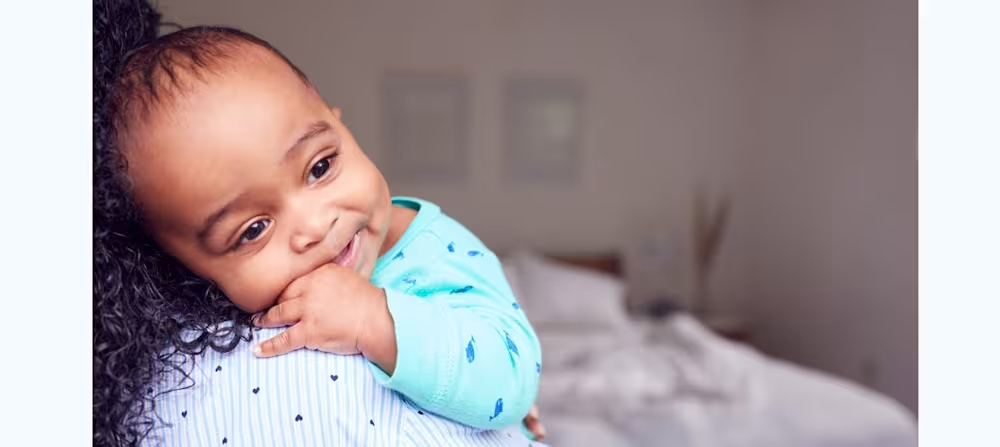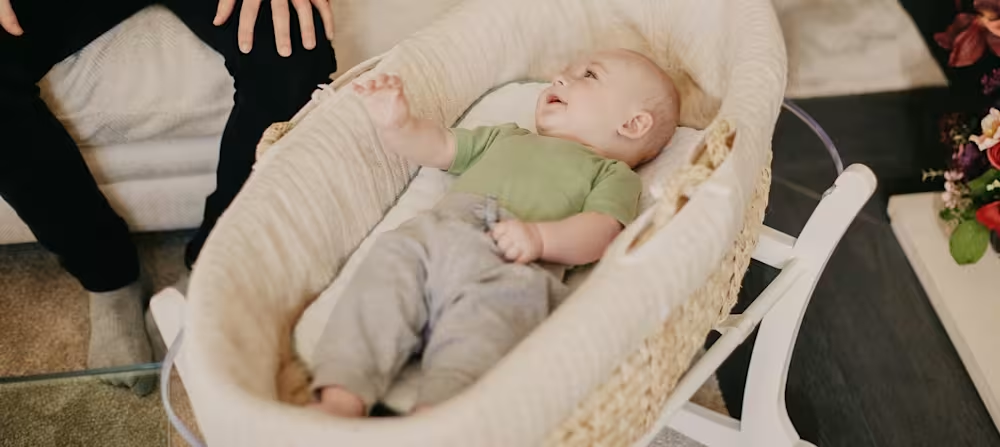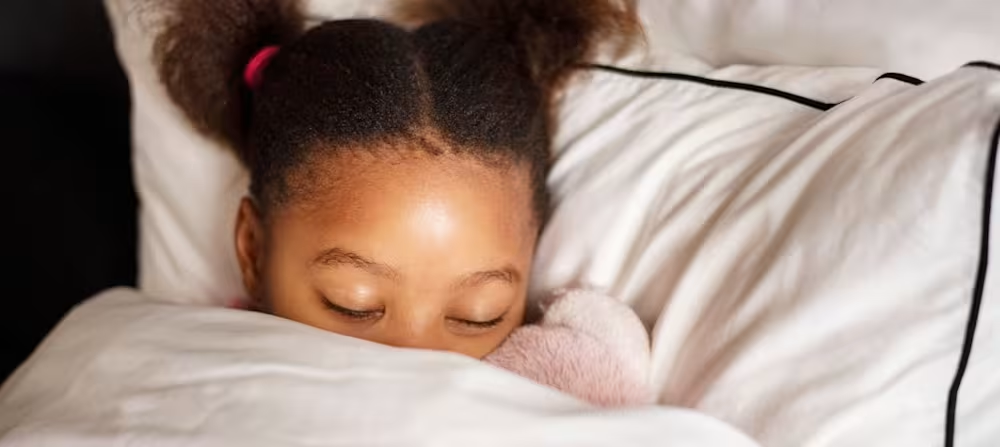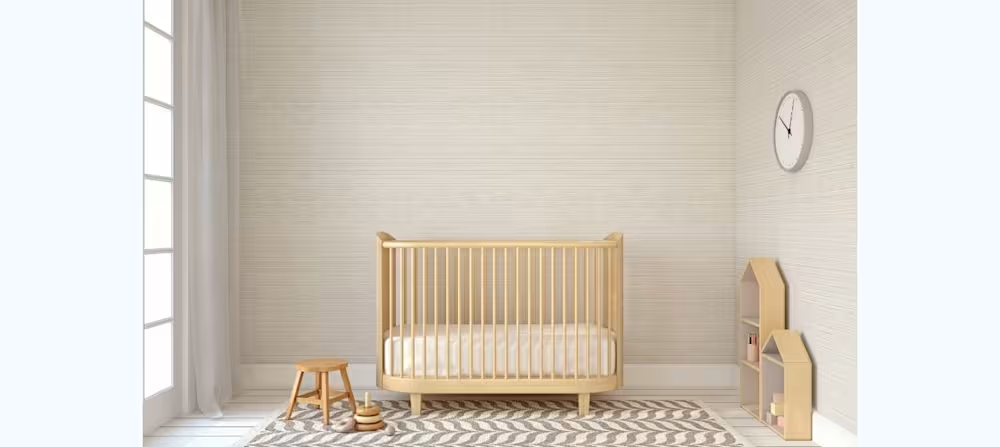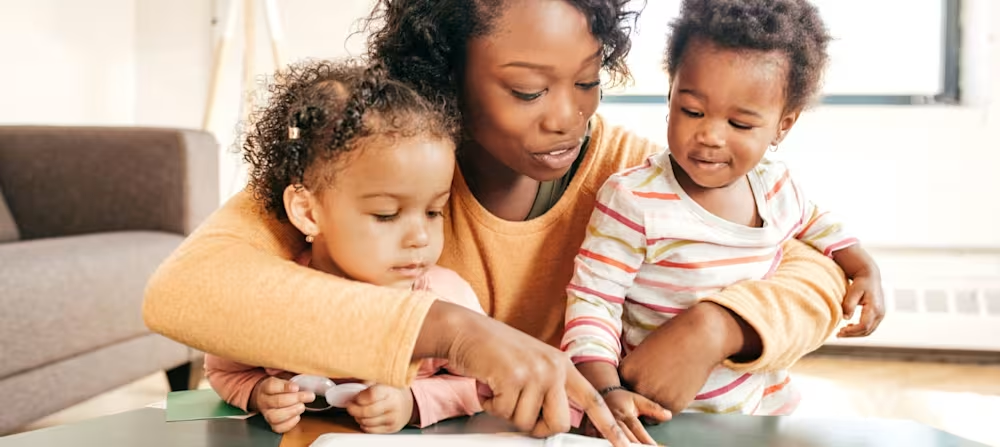When to move baby to crib: Help your baby move out of the bassinet
Updated Oct 16, 2025

Let’s be real: you’ll face a lot of transitions as a parent and some will be more challenging than others. Try not to let this one intimidate you. Chances are this move won’t be as scary as you anticipate; in fact, many of the families we work with are able to make this shift pretty smoothly. Here’s what you’ll need to know to ensure that your transition is a success too.
How do I introduce a crib to my baby?
Feel free to introduce your baby to the crib as soon as it’s assembled. Even if you intend to use the bassinet for most sleep times to start, you can still give your baby the opportunity to get used to the bigger sleep space.
Begin by offering non-sleep play periods in the crib. Some people feel that cribs should only be used for sleep, but at Huckleberry, we disagree. We want your baby to view the crib as a happy place, and feel secure as they adjust to this new space.
Keep the lights on, and the mood upbeat, while giving your baby 5 - 10 minutes of playtime in the crib a couple of times each day. Try playing fun music or singing songs (the theme song from “The Golden Girls” is always a solid choice). This can help create a lighter atmosphere, ideally making it easier for your little one to adjust to spending more time in the crib.
Some babies are comfortable in the crib right from the start, while others seem to hate it (cue the crying and flailing). Try not to be discouraged if your baby is in the latter group. Like most things with sleep, consistency, and patience generally lead to improvement.
When to stop using the bassinet & when to move baby to the crib
Most babies should transition from the by 4 - 6 months of age due to safety and comfort factors. Check out the height, weight, and other safety recommendations from your specific bassinet manufacturer. Some bassinets are designed to safely accommodate babies up 25 lbs, while others are only meant to handle babies up to 20 lbs.
Regardless of their size, you’ll want to make the switch from the bassinet when your baby starts rolling, , and/or getting onto their hands and feet in a crawling position. That new mobility can place them at risk of falling out of the bassinet [].
What does the transition from bassinet to crib look like?
Once you’ve decided and determined your child is ready to sleep in a crib (whether that’s because they need a bigger space or you’re ready to move them ), you can opt for a gradual move or to make the transition all at once.
Gradual method:
You may prefer to make the shift in small stages if there aren’t safety issues (i.e., your baby hasn’t exceeded the height and weight allowances of the bassinet, and their mobility doesn’t put them in danger of falling out). In that case, you’ll start offering one sleep period in the crib per day (such as the first nap) and continue the rest in the bassinet. After a few days, you can move on to another sleep period in the crib (e.g., bedtime), and so on, until they’re no longer sleeping in the bassinet at all.
Wondering where to begin? Start with the first nap of the day, or bedtime only, in the crib. We find that these sleep periods tend to be the easiest. That is, parents, report that babies are less likely to fight sleep at these times compared to naps later in the day or falling back to sleep in the middle of the night. Once your baby has had several snoozes in the crib at these easier times, you can move on to the remaining sleep periods.
Faster method:
Parents who want to make the shift to the crib faster can start with bedtime in the crib, followed by all subsequent sleep periods. Since this is a period of adjustment, expect that sleep may be bumpy for a few days as your baby gets used to the new environment.
5 tips and tricks for moving your baby to the crib
Here are some tips for moving your baby to a crib:
Continue to use your consistent bedtime routine
Give your newborn some practice
Start with an “easy” sleep time
Simulate the coziness
Use the weaning feature on motion bassinets
Find more information below:
Tip #1: Continue to use your consistent bedtime routine
Developing a calm (for both naps and bedtime) may not magically ensure your baby loves the switch to the crib. But it’s an important foundation-setting step. Consistent routines help cue that it’s time to wind down and sleep, no matter where that sleep takes place. That means your baby will know what to expect, whether sleep is happening in the bassinet or the crib.
Bonus: Not only do bedtime routines promote healthy sleep habits and improve overall well-being — they have broader positive consequences too (like increasing feelings of security and providing early learning opportunities) [
Tip #2: Give your newborn some practice
If space allows, give your baby the opportunity to fall asleep in the crib once in a while, even if they’re still using the bassinet for most sleep times. That way, when you’re ready to make the switch, they’ll have some experience being in the crib.
Look for opportune times when your baby is fed, dry, sleepy, and content. They may surprise you and drift right off to sleep! If your baby doesn't fall asleep in the crib, you can always try again another time.
Tip #3: Start with an “easy” sleep time
Once you’re ready to swap the crib for the bassinet, we advise kicking off the transition with the easiest sleep period of the day. The idea is that your baby will be less likely to fight sleep and more likely to accept the new sleep space. Parents often tell us that it tends to be the first nap of the day or bedtime. You know your baby best, however, and their surest sleep session may be different.
Tip #4: Simulate the coziness
Since bassinets are much smaller than cribs, some parents worry that their child will feel overwhelmed by the vast open space that the crib provides. If you think your baby will miss the comfort of the close sides of the bassinet, there’s an easy fix. Don’t place your baby in the middle of the crib. Instead, place them down at one end of the crib so that their body is parallel to the sides; this will give your baby the feeling of being enclosed on three sides and may help them feel more secure.
Tip #5: Use the weaning feature on motion bassinets
If you have a self-moving bassinet (the kind that rocks, jiggles, or otherwise uses motion to lull your baby to sleep), you may be faced with an additional challenge as you transition away from it. Not only will your baby need to adjust to a new sleep space, but they’ll also need to adjust to falling asleep without the motion the bassinet provided.
Luckily, many of these modern bassinets have a weaning function, to help your baby acclimate to falling asleep with less movement. Use it! Unless your baby needs to transition to a crib immediately for safety reasons, the weaning feature can help your baby gradually adjust to falling asleep without motion, and learn to self-soothe, which can help reduce calls for parental help during the night [] and make the transition to the crib easier.
AAP guidelines of bassinet and crib use
To reduce the risk of a sleep-related death, the American Academy of Pediatrics (AAP) recommends always placing your baby down to sleep on their back []. Use a firm, flat surface without soft objects (like pillows or stuffed animals), or lose bedding.
Whether your baby’s sleep space is a bassinet or a crib, the AAP also recommends that the furniture meets the safety requirements of the Consumer Product Safety Commission (CPSC) []. You can read more about crib safety .
Takeaway
Most babies transition away from the bassinet by 4 - 6 months of age due to safety and comfort factors. Regardless of size and space, you'll want to switch your baby out of a bassinet if they start rolling, sitting up, or they're getting on their hands and feet in a crawling position. New mobility may place them at risk of falling out of the bassinet or knocking it over.
You can introduce your baby to the crib as soon as it's assembled, even if you intend to have them sleep in a bassinet to start. This will give them opportunities to get used to the bigger sleep space and view it as a happy place.
Ways to improve the transition of moving your baby to a crib include: continue to use your consistent bedtime routine, give newborns some practice in the bigger sleep space, start with an "easy" sleep time, simulate coziness with sleep sacks, and use the weaning feature if your bassinet has it.
Share article:
Note: The content on this site is for informational purposes only and should not replace medical advice from your doctor, pediatrician, or medical professional. If you have questions or concerns, you should contact a medical professional.
5 Sources
Share article:
